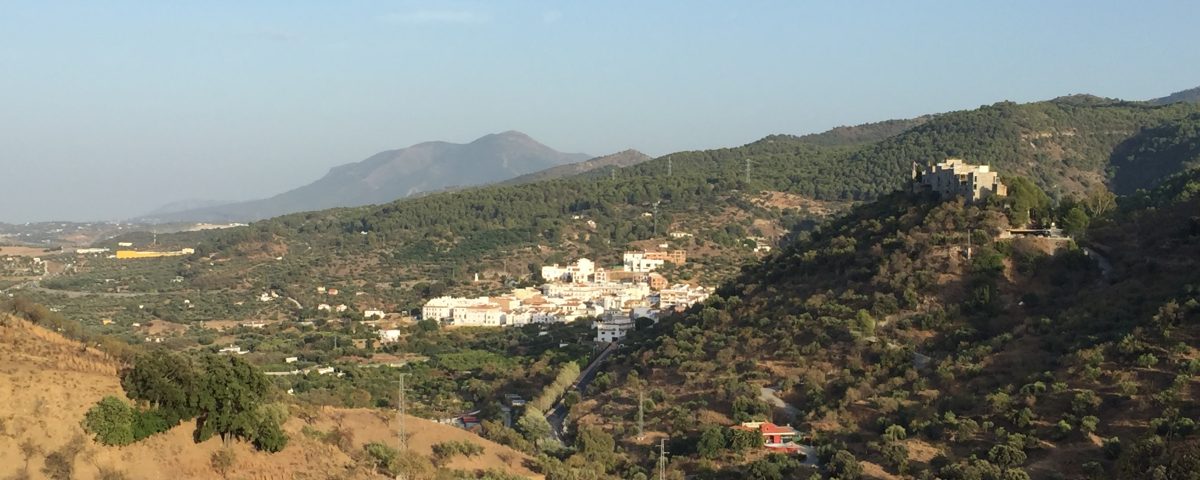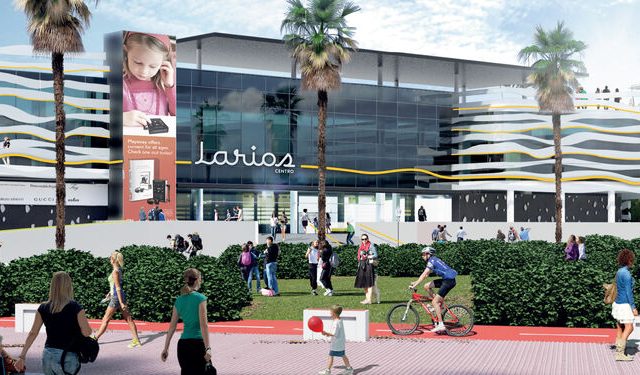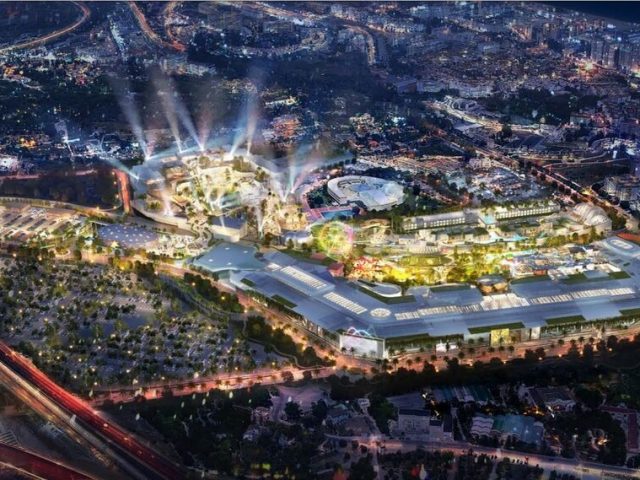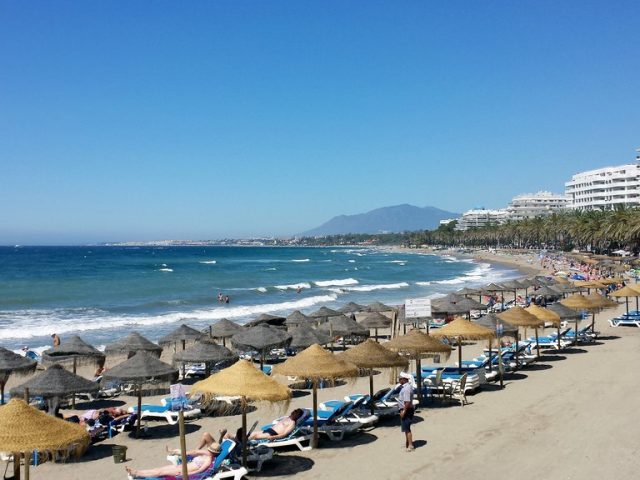- Have any questions?
- +34 951 273 575
- info@allaboutandalucia.com
Guadalhorce: Valley of plenty

Sotogrande’s secret places to dine
August 11, 2016
Charming rural retreats in the Guadalhorce Valley
October 15, 2016A food truck fiesta reminds Laurence Dollimore that the settlements of the Guadalhorce Valley have fed, watered and fascinated visitors since Roman times
“THERE’S always something happening here,” says Amanda Owen Jones. “We love it because the area is so traditional but it also has its modern touches, it’s like the old meeting the new.”
The smitten 54-year-old is talking about Coin, the unassuming and quintessentially Andalucian capital of the Guadalhorce Valley – a winding green corridor hemmed in by mountains linking eight white municipalities like pearls on a necklace.
Coin – pronounced ‘co-een’ – has been coining it in from its cornucopia of agricultural produce and precious marble since the Romans set it up as the market town of Lacibis, some 2,000 years ago.
Today vintage churches and pastel apartment buildings that wouldn’t look out of place in Paris meet modern bars and cafes and the large 45,000m2 La Trocha shopping centre.
A weekend food truck festival was in full swing when I pitched up at the centre, where you will find the likes of Dunnes stores and other chains.
A garish yellow American school bus, rigged with a booming sound system and a stage for live performances, marked the entrance to this pop-up feast lining the main square.
There were burgers and pizzas, American hot dogs and Asian wok dishes, cocktails and ice cream.
Families dressed to the nines came in their droves to eat, drink and laugh the night away with friends.
“And this is nothing compared to some of the other events they have,” says Amanda, who flits back and forth between Coin and Wales with hubby Trefor, 60. “We always do New Year here, when 4,000 people fill the streets in fancy dress, it’s absolutely amazing.”
The couple have owned a house in the nearby hills for a decade, some 20 minutes walk from the centre, getting the best of both worlds.
“We are not really Marbella people, we like things quiet but we also like to have a good time, which is why it’s great here,” says Trefor.
“It’s family-orientated and safe and there is always something exciting going on.”
Indeed, the food trucks wouldn’t have looked too out of place in Roman Lacibis on market day. As well as being the Roman’s fruit and veg basket, Coin was a transition point for the minerals being quarried five kilometres to the south, in the Sierra Blanca.
Marble from these quarries was used to construct the Roman town of Italica, near Sevilla, birthplace of the mighty Emperor Hadrian in 76AD.
Like many parts of Spain, Coin fell to the Moors in the 900s before being reconquered by the Christians in the late 15th century.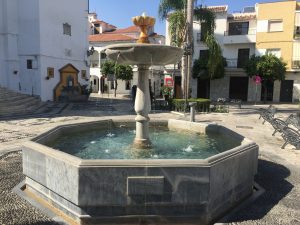
The city buckled under the pressure of a siege in which, according to legend, the great New World explorer Christopher Columbus took part.
Four centuries later, a certain Captain S.E. Cook of the Royal Navy visited Coin and the surrounding towns of the Guadalhorce valley and was clearly as impressed as residents today.
‘These villages are on rising ground above the river and, in beauty of situation and cultivation, cannot be excelled’, he wrote.
‘They afford a specimen of the whole country when possessed by the Moors, being surrounded by gardens with orange, lemon and palm trees.’
Coin is rightly proud of its agricultural history. Thousands of euros have been spent creating beautiful narrative murals throughout the town, featuring Coin’s orange tree emblem and explaining how its farming tradition began.
You can even pick a few of these succulent low-hanging spheres yourself. Every town in the valley sprouts different varieties of fruit trees – living motifs to represent their valley of plenty.
Alhaurin el Grande to the east was described by the Romans as being blessed by the gods for its fertility, minerals and sunny climate.
The bustling town, carved into the Sierra de Mijas, has had quite the tumultuous history.
After the Romans, the Visigoths descended, and then the Moors who brought it up to date, built a fort to keep enemies out and changed its Roman name from Lauro Nova to the more appropriate Alhaurin, meaning Garden of Allah.
Like the Romans before them, they linked it to another neighbouring community by name, distinguishing the two townships as Alhaurin el Grande (The Great) and Alhaurin de la Torre (of the Tower).
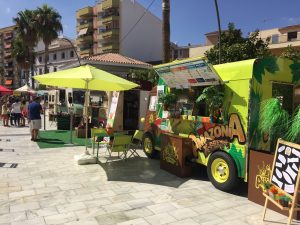 Alhaurin the Great lived up to its name, seeing off waves of invaders, epidemics of plague and even an earthquake in 1680. During the Peninsula War of 1808-14, it was occupied for four years by French troops and suffered considerable bombardment.
Alhaurin the Great lived up to its name, seeing off waves of invaders, epidemics of plague and even an earthquake in 1680. During the Peninsula War of 1808-14, it was occupied for four years by French troops and suffered considerable bombardment.
It is even more remarkable, then, that traces of its ancient past still survive. A 12th century Moorish archway remains firmly in place while the Plaza del Ayuntamiento displays five Roman columns excavated close by.
From the plaza you get amazing bird’s eye views of the valley. Combined with narrow streets and colourful terraces, you can’t help but feel you’ve discovered the Spain every visitor comes to find.
“You can live in a beautiful and authentic setting while being just 30 minutes from the coast,” says Antonio Alvarez, an Alhaurin-born Spaniard who had popped over to Coin to check out the food truck festival.
“If you want a taste of the real Spain this is where you come, it’s so peaceful and there’s such a community spirit, which is getting harder and harder to find these days.
“Things are also a lot cheaper up here,” he adds.
Nowhere is that authentic Spanish flavour more piquant than in Alora, a typical pueblo blanco that shines like a white light on the mountain.
Set between three rocky spurs and topped with an ancient castle, Alora is known as the ‘Crown of the Guadalhorce’ and its most famous resident – Cervantes, who allegedly lived here from 1587-93 – is practically royalty in Spain.
First built by the Phoenicians, expanded under the Romans, almost obliterated by the Visigoths and rebuilt by the Moors, Alora is still reeling from the shock of yet another invasion – tourists. They come, these days, in their thousands for one reason: to take the Caminito del Rey challenge.
Once known as the world’s most dangerous walkway, the ‘King’s Little Path’ has become the biggest attraction in the valley and is known all over the world.
Built into limestone rock face, the three-kilometre route offers heart-stopping views as it crosses the Gaitanes gorge over the river, a giddy 100 metres below.
It reopened last year following four years of extensive repairs and renovations, and is now attracting adrenalin junkies from Tokyo to Timbuktu who are looking for their next kick or daredevil selfie.
The architectural marvel has just been awarded a €10 million cash injection from the European Union to help bolster the attraction and its surrounding villages.
The reservoirs in the region – around El Chorro – also draw tourists to the ‘Malaga Lake District’, as it has become known.
With crystal blue waters and plenty of secluded spots along the shore to lay out your towel and picnic, it’s the perfect alternative to a day on a crowded Costa del Sol beach.
Waterside restaurants keep the spot popular in winter too, with blazing log fires and barbecues offering a warming welcome after a bracing walk around the lake shores.
If you’re looking for a break from the hustle and bustle of the coast, the authentic white villages of the Guadalhorce valley are within easy reach and waiting to be explored.

